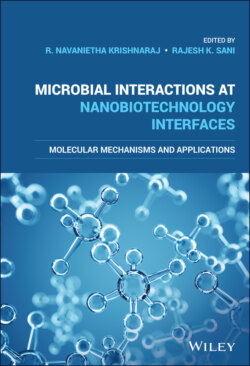Читать книгу Microbial Interactions at Nanobiotechnology Interfaces - Группа авторов - Страница 40
1.7 Antibacterial Application of NMs
ОглавлениеGenerally, NMs have been used as an antimicrobial coating material for implantable medical devices such as heart valves, dental implants, and catheters (intravenous catheters or neurosurgical catheters). One of the best examples is the coating of drug‐loaded mesoporous TiO2 on the implants, which inhibits the growth and even the adhesion of E. coli (Della Valle et al., 2012; Xia et al., 2012). The skin is part of the primary immune defense system in our body where trauma or burns or chronic ulcers damage skin and compromise its functions. Common microbial infections associated with skin wounds are Staphylococcus, Streptococcus, E. coli, and Klebsiella species. Here, the infections involve multiple bacteria including antibiotic‐resistant bacteria where the antimicrobial agent needs to have a broad spectrum of antimicrobial property. In this regard, NMs have been exploited in the preparation of wound dressing materials. Silver NPs along with polyvinyl alcohol and chitosan have been used in the synthesis of fiber mat for wound healing. Nanosilver with high antimicrobial property significantly inhibited the growth of bacteria and along with mat fiber enhanced the wound healing rate (Li et al., 2013). In addition, NMs with antimicrobial properties have been also used in bone and dental implants. Bone cement containing polymethyl methacrylate (PMMA) with silver‐doped silica glass powder significantly inhibited the formation of biofilm over the implants (Miola et al., 2015). TiO2 mixed with prosthesis retarded bacterial growth and prevented biofilm formation over light exposure (Aboelzahab et al., 2012). Among various NMs, the most commonly exploited antibacterial NMs include nanometals, metal oxides, carbonaceous materials, and cationic polymers.
